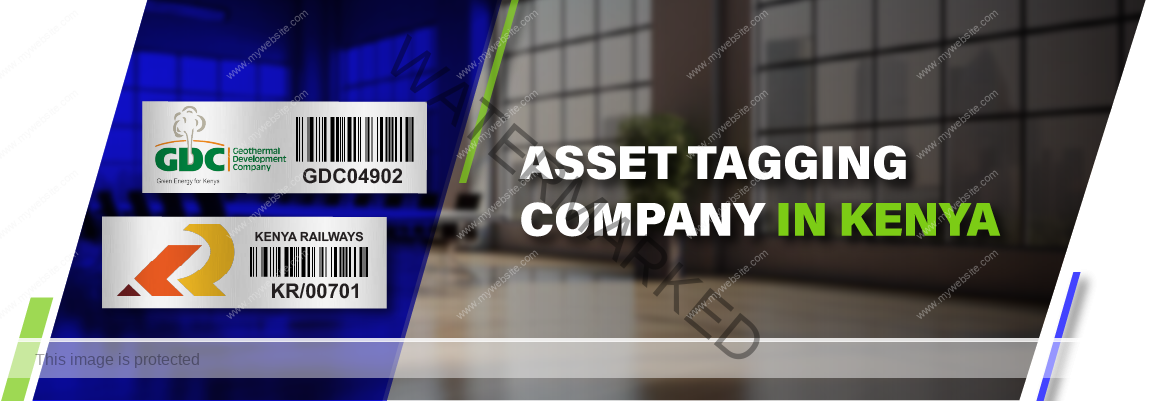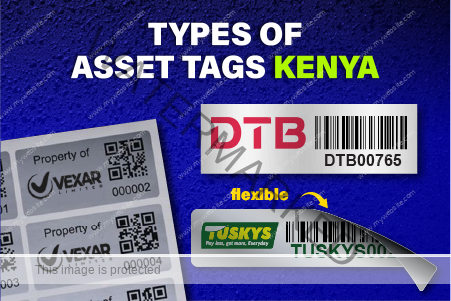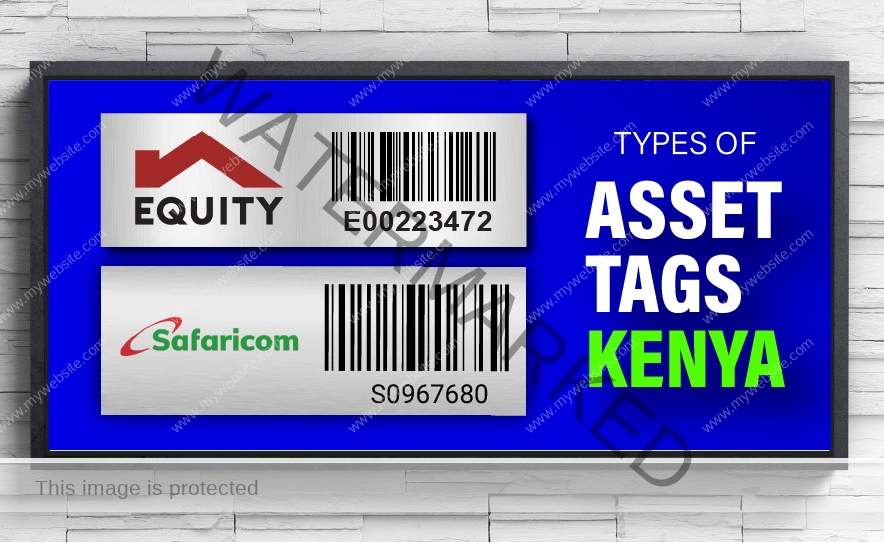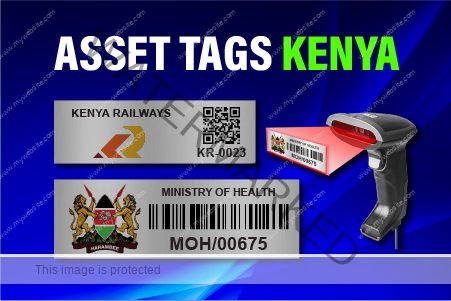Applications of Aluminium Asset Tags – In the dynamic business landscape of Kenya, effective asset management is essential for organizations across various industries to streamline operations, enhance security, and drive productivity. Among the myriad tools available for asset tracking, aluminium asset tags stand out as a versatile and reliable solution. Let’s explore the top uses and applications of aluminium asset tags in Kenya and discover how they empower businesses to optimize their asset management strategies.
In the dynamic landscape of Kenyan industries, effective asset management is a critical component for streamlined operations and enhanced security. Aluminium asset tags have emerged as a versatile solution, offering durability and resilience for various applications. Let’s explore the top uses and applications of aluminium asset tags that are reshaping the way businesses in Kenya manage their valuable assets.
Aluminium Asset Tags Labels Streamline Equipment Tracking in Manufacturing
In the manufacturing sector, where machinery and equipment are critical assets, aluminium asset tags play a pivotal role in streamlining tracking processes. By affixing durable aluminium tags to machinery, tools, and equipment, manufacturers gain real-time visibility into asset location, usage history, and maintenance schedules. This enables proactive maintenance, minimizes downtime, and ensures optimal resource utilization.
Aluminium Asset Tags Labels
Enhance Inventory Management in Retail
Retailers in Kenya rely on efficient inventory management to meet customer demands and maintain profitability. Aluminium asset tags provide a cost-effective solution for accurately tracking inventory items, from products on store shelves to backroom stock. By scanning tags at various stages of the supply chain, retailers can optimize stock levels, prevent stockouts, and improve order fulfillment efficiency.
Aluminium Asset Tags Labels are used to Secure Assets in Construction and Infrastructure Projects
In the construction and infrastructure sectors, where assets are spread across large worksites and exposed to harsh environmental conditions, security is paramount. Aluminium asset tags offer a durable and tamper-resistant solution for asset identification and protection. By tagging equipment, tools, and materials with aluminium labels, construction companies can deter theft, prevent unauthorized use, and maintain accountability throughout the project lifecycle.
Aluminium Asset Tags Labels are used to Optimize Fleet Management for Transportation Companies
Transportation companies operating in Kenya rely on efficient fleet management to ensure timely deliveries and maintain operational efficiency. Aluminium asset tags can be used to track vehicles, trailers, and other fleet assets, providing real-time visibility into their whereabouts and maintenance status. By implementing asset tagging solutions, transportation companies can enhance route planning, optimize vehicle utilization, and improve overall fleet performance.
Aluminium Asset Tags Labels are used to Ensure Compliance in Healthcare Facilities
In the healthcare sector, compliance with regulatory standards and patient safety guidelines is paramount. Aluminium asset tags play a crucial role in asset tracking and management within hospitals, clinics, and medical facilities. By tagging medical equipment, devices, and supplies, healthcare providers can ensure compliance with maintenance schedules, track asset usage, and mitigate the risk of equipment-related incidents.
List of Indutries where Aluminium Asset Tags are Applied
Here are ten industries where aluminium fixed asset tags find wide-ranging applications:
Manufacturing Industry:
- Aluminium fixed asset tags are used to track machinery, equipment, and tools in manufacturing plants. They help streamline maintenance schedules, monitor asset utilization, and prevent loss or theft.
Construction Industry:
- In construction, aluminium asset tags are applied to heavy machinery, tools, and construction materials. They aid in asset tracking across various job sites, ensuring efficient resource management and project oversight.
Healthcare Sector:
- Hospitals and healthcare facilities utilize aluminium fixed asset tags to track medical equipment, devices, and furniture. These tags help ensure regulatory compliance, facilitate equipment maintenance, and enhance inventory management.
Education Sector:
- Educational institutions use aluminium asset tags to manage laptops, projectors, laboratory equipment, and other resources. These tags aid in inventory control, asset allocation, and theft prevention.
Government Agencies:
- Government agencies apply aluminium fixed asset tags to track office furniture, vehicles, IT equipment, and infrastructure assets. These tags help maintain accountability, streamline asset management processes, and optimize resource allocation.
Transportation and Logistics:
- In the transportation and logistics industry, aluminium asset tags are applied to vehicles, containers, and cargo. They facilitate asset tracking throughout the supply chain, enabling efficient inventory management and logistics operations.
Retail Sector:
- Retailers use aluminium fixed asset tags to manage inventory, equipment, and fixtures in warehouses and retail stores. These tags aid in stock control, asset visibility, and theft prevention.
Oil and Gas Industry:
- The oil and gas sector utilizes aluminium asset tags to track equipment, pipelines, and infrastructure assets in challenging environments. These tags withstand harsh conditions, ensuring visibility and accountability in asset management.
Agriculture and Farming:
- Farmers and agricultural businesses apply aluminium fixed asset tags to track equipment, machinery, and livestock assets. These tags aid in equipment maintenance, inventory management, and farm operations optimization.
Hospitality and Tourism:
- Hotels, resorts, and tourism establishments use aluminium asset tags to manage furniture, electronic devices, and amenities. These tags aid in asset tracking, maintenance scheduling, and guest service optimization.
From manufacturing and retail to construction, transportation, and healthcare, aluminium asset tags find diverse applications across various industries in Kenya. By leveraging the durability, versatility, and reliability of aluminium tagging solutions, businesses can optimize asset management processes, enhance security measures, and drive operational efficiency. Whether it’s tracking equipment, managing inventory, securing assets, or ensuring compliance, aluminium asset tags offer a cost-effective and scalable solution to meet the evolving needs of businesses in Kenya’s dynamic marketplace.

Understanding Aluminium Fixed Barcode Asset Tags
Aluminium fixed barcode asset tags represent a robust and reliable solution for asset identification and tracking. These tags are constructed from durable aluminium material, ensuring longevity and resistance to harsh environmental conditions such as moisture, UV exposure, and temperature fluctuations. Each tag features a unique barcode that serves as a unique identifier for the associated asset.
Implementing Aluminium Fixed Barcode Asset Tags in Kenya & Africa
To harness the full potential of aluminium fixed barcode asset tags, organizations in Kenya and Africa can follow these best practices:
Assessment: Conduct a comprehensive assessment of asset management needs, including the types of assets to be tagged, the desired level of data granularity, and existing infrastructure compatibility.
Selection: Choose aluminium fixed barcode asset tags that meet the specific requirements of your organization, considering factors such as size, material durability, barcode symbology, and adhesive properties.
Installation: Properly affix asset tags to assets using adhesive backing or mechanical fasteners, ensuring secure attachment and optimal barcode visibility for scanning purposes.
Training: Provide training to personnel responsible for asset management processes, including asset tagging, scanning, data entry, and system integration. Emphasize the importance of accurate data capture and compliance with tagging protocols.
Maintenance: Establish regular maintenance routines to inspect and replace damaged or deteriorated asset tags as needed. Implement proactive measures to prevent tag tampering, theft, or loss, such as security seals or tamper-evident features.
Conclusion
In conclusion, aluminium fixed barcode asset tags offer a reliable and cost-effective solution for organizations in Kenya and Africa seeking to enhance their asset management capabilities. By leveraging the durability, visibility, versatility, integration, and cost-effectiveness of barcode technology, businesses can streamline asset tracking processes, improve data accuracy, and optimize resource utilization. Whether in manufacturing, logistics, healthcare, or any other industry, aluminium fixed barcode asset tags empower organizations to achieve greater efficiency, accountability, and success in managing their valuable assets.




